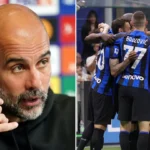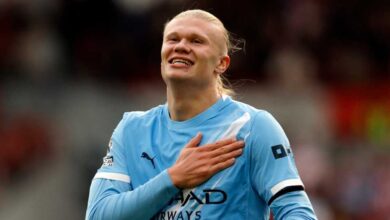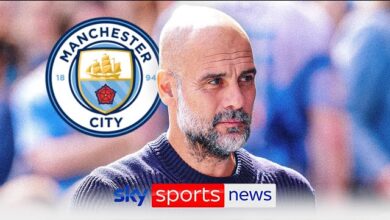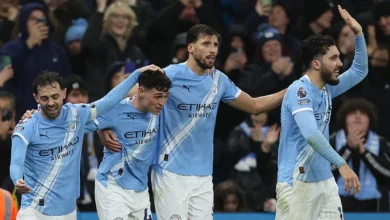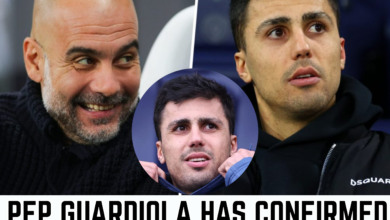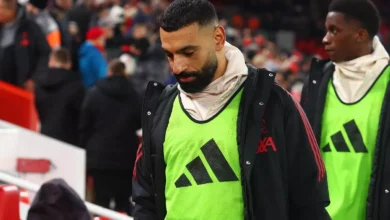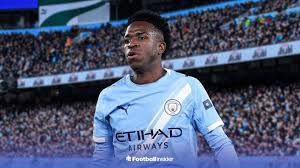Inter Milan Target Bernardo Silva: Manchester City Star May Need Wage Reduction for Dream Transfer
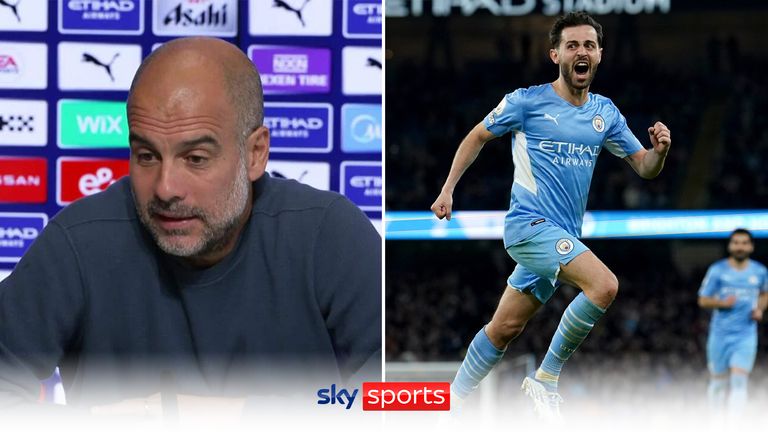
In the ever-evolving landscape of European football, few players embody technical excellence and tactical versatility quite like Bernardo Silva. The Manchester City midfielder has been a cornerstone of Pep Guardiola’s dynasty, contributing to multiple Premier League titles and a historic Champions League triumph. However, as the 2025-26 season approaches, the Portuguese international finds himself at a crossroads that could define the twilight years of his illustrious career.
At 31 years old, Silva remains a vital component of Manchester City’s midfield machinery. This season alone, he has already made 12 appearances across all competitions, demonstrating his enduring quality with one goal and one assist. Yet beneath the surface of these statistics lies a more complex narrative—one that involves contract negotiations, Italian ambitions, and the inevitable transition that even the most successful clubs must undergo.
The Contract Situation: A Ticking Clock
Bernardo Silva’s current contract with Manchester City is set to expire in 2026, a timeline that has not gone unnoticed by Europe’s elite clubs. In the modern transfer market, players entering the final year of their contracts become increasingly attractive propositions, particularly for clubs operating under strict financial constraints. The Portuguese midfielder falls squarely into this category, and the vultures are beginning to circle.
Manchester City faces a familiar dilemma that confronts all top clubs: how to balance squad rejuvenation with the retention of experienced, world-class talent. Silva has been integral to the club’s success since his arrival from AS Monaco in 2017, but at 31, questions naturally arise about whether he fits into the long-term vision Guardiola and the club’s hierarchy are constructing.
The midfielder’s technical ability remains undiminished. His capacity to operate in tight spaces, his intelligent movement off the ball, and his ability to contribute both defensively and offensively make him one of the most complete midfielders in world football. However, the harsh reality of elite-level football means that age eventually becomes a factor in strategic planning, regardless of a player’s current form or past contributions.
Italian Interest: A Three-Way Battle
The interest from Italy’s Serie A has been steadily building over recent weeks, with not one but three of the league’s most prestigious clubs reportedly monitoring Silva’s situation. According to reports from Calciomercato, AC Milan were among the first to express concrete interest in the midfielder. The Rossoneri, perpetually seeking to restore their former glories, view Silva as the type of experienced, technically gifted player who could elevate their midfield to a level capable of competing with Inter Milan and Juventus for the Scudetto.
Juventus, never ones to miss an opportunity to strengthen their squad with proven quality, have also been linked with a potential move. The Old Lady has a long history of acquiring experienced players who can provide both immediate impact and valuable mentorship to younger squad members. Silva would fit this profile perfectly, offering the kind of technical excellence and winning mentality that Juventus has always prized.
However, it is Inter Milan who appear to have emerged as the frontrunners in what could become a captivating transfer saga. According to L’Interista, the Nerazzurri are actively planning for Silva’s potential arrival at the San Siro in 2026, viewing him as the ideal replacement for an aging Henrikh Mkhitaryan.
Inter Milan’s Strategic Vision
Under the stewardship of manager Cristian Chivu and sporting director Beppe Marotta, Inter Milan have been carefully constructing a squad capable of sustained domestic dominance and European competitiveness. Their recent Serie A title triumphs have been built on a foundation of tactical discipline, defensive solidity, and opportunistic attacking play. However, the club’s leadership recognizes that maintaining this level requires constant evolution and strategic recruitment.
Henrikh Mkhitaryan, the Armenian midfielder who has provided valuable experience and quality since joining Inter, is expected to depart at the end of the current season. At 36, the former Manchester United and Arsenal player has had a commendable career, but Father Time waits for no one. Inter are proactively seeking his replacement, and Bernardo Silva represents not just a like-for-like substitution but a significant upgrade in quality and longevity.
Beppe Marotta has built a formidable reputation as one of European football’s shrewdest operators. During his time at Juventus, he became renowned for his ability to identify and acquire top-tier talent on free transfers, maximizing quality while minimizing financial outlay. His track record includes securing the services of Andrea Pirlo, Paul Pogba, and Sami Khedira on free transfers—moves that proved transformative for Juventus and demonstrated Marotta’s exceptional acumen in the transfer market.
This expertise is precisely what makes Inter’s pursuit of Silva both realistic and potentially successful. If the Portuguese midfielder can be convinced to join the Nerazzurri, it would represent another coup for Marotta and solidify Inter’s position as Serie A’s dominant force.
The Financial Hurdle: Wages and Sustainability
Despite the sporting appeal of the transfer, significant financial obstacles remain. Inter Milan, like many Italian clubs, operate under stricter financial constraints than their counterparts in the Premier League. The club’s wage structure, while competitive within Serie A, cannot match the astronomical salaries offered by England’s top clubs.
Currently, Lautaro Martinez stands as Inter’s highest earner, commanding approximately €9 million per season. This figure, while substantial in the context of Serie A, pales in comparison to the wages offered at Manchester City. Bernardo Silva currently earns around €10 million per season at the Etihad, and any move to Inter would require him to accept a reduction in his basic salary.
This wage differential represents the crux of the entire transfer saga. For the move to materialize, Silva would need to prioritize sporting considerations and lifestyle factors over pure financial gain. It’s a decision that many players face in their thirties: continue earning maximum wages at a mega-club or accept slightly reduced terms in exchange for a new challenge, potentially more playing time, and a different cultural experience.
The requirement for Silva to take a pay cut is not unusual in modern football. Many players in their thirties who move from the Premier League to Serie A, La Liga, or other leagues accept reduced wages in exchange for other benefits—whether that’s guaranteed playing time, a more prominent role in the team, or the allure of living in a new country and experiencing a different football culture.
Inter Milan’s proposal, while financially modest by Premier League standards, still represents a lucrative contract by most measures. The club would be offering Silva the opportunity to become one of their highest-paid players, demonstrating their commitment to building the team around his considerable talents.
The Sporting Case: Why Silva Would Transform Inter
Beyond the financial considerations, the sporting rationale for Silva’s acquisition is compelling. Inter Milan’s coaching staff and technical department believe the Portuguese midfielder would add dimensions to their play that are currently absent. The Italian media have described Silva as potentially bringing “magic” and “imagination” to Chivu’s side—qualities that, while perhaps overstated, point to genuine tactical benefits his signing would provide.
Silva’s technical ability is beyond question. His first touch, close control, and ability to manipulate the ball in confined spaces are among the best in world football. In Serie A, where tactical sophistication and defensive organization often make creating chances challenging, having a player capable of unlocking stubborn defenses through individual brilliance would be invaluable.
Moreover, Silva’s versatility would provide Chivu with significant tactical flexibility. Throughout his career, the Portuguese international has operated successfully in multiple positions—as a right winger, central midfielder, attacking midfielder, and even occasionally as a false nine. This adaptability would allow Inter to adjust their system based on opposition or game state without sacrificing technical quality.
The comparison with Henrikh Mkhitaryan, while perhaps unfair to the Armenian veteran, highlights the upgrade Inter expect Silva to provide. Reports suggest the club believes Silva would guarantee more goals than Mkhitaryan has provided. While Mkhitaryan has been a reliable servant, contributing important assists and occasional goals, Silva’s track record suggests he could offer greater attacking output while maintaining similar defensive contributions.
In Manchester City’s system, Silva has consistently contributed between 5-10 goals and a similar number of assists per season—a respectable return for a midfielder in a team with multiple attacking outlets. In a system where he might receive more freedom and central responsibility, these numbers could potentially increase.
The Broader Context: Manchester City’s Transition
Silva’s potential departure must be understood within the broader context of Manchester City’s squad evolution. Pep Guardiola has been at the Etihad since 2016, and the core of players who delivered the club’s greatest triumphs are now entering their thirties. Kevin De Bruyne, Kyle Walker, and Silva himself are no longer young players, and City must plan for their eventual succession.
The club has already begun this process, investing heavily in younger talent like Phil Foden, Rico Lewis, and others who represent the next generation of Manchester City stars. The question facing the club’s hierarchy is not whether Silva remains an excellent player—he clearly does—but rather whether keeping him aligns with the squad’s long-term trajectory.
There are arguments on both sides. Retaining Silva would maintain continuity and keep a player whose understanding of Guardiola’s system is virtually unmatched. His experience in crucial matches, his professionalism, and his ability to mentor younger players are all valuable assets that don’t appear on stat sheets.
Conversely, allowing Silva to depart—particularly if a reasonable fee could be negotiated despite his contract situation—would free up wages and squad space for younger acquisitions. It would also provide Silva himself with a new challenge rather than potentially becoming a peripheral figure as younger players claim more prominent roles.
The Player’s Perspective: What Silva Might Be Thinking
From Silva’s viewpoint, the decision involves multiple considerations beyond mere finances. At 31, he likely has 2-4 more years of elite-level football ahead of him. How he spends those years will shape his legacy and personal satisfaction as his career winds down.
Staying at Manchester City offers security, familiarity, and the continued opportunity to win major trophies. The club competes for every available honor each season, and Silva would remain part of that quest. He has built a life in Manchester, speaks English fluently, and has become an institution at the club.
However, moving to Inter Milan would present a fresh challenge—something that can reignite motivation and passion for players in their thirties. The opportunity to experience Italian football, live in Milan, learn a new language, and build a legacy at another prestigious club holds genuine appeal. Additionally, Silva might reasonably expect more consistent playing time at Inter than at an increasingly youth-focused Manchester City.
The cultural aspect shouldn’t be underestimated. Milan is one of Europe’s great cities, renowned for fashion, culture, and quality of life. For a Portuguese player accustomed to the warmer climates and Latin cultures of southern Europe, the transition to Italy might feel more natural than life in Manchester, despite his years there.
There’s also the matter of sporting legacy. Silva has won everything possible at Manchester City. While adding more titles would be gratifying, they might feel incrementally less significant. At Inter, he could become a central figure in the club’s continued success, potentially cementing legendary status in Italian football—something that might appeal to a competitor seeking new mountains to climb.
The Negotiation Dance: How This Could Unfold
If Inter Milan seriously pursue this transfer, the negotiation process will be complex and multi-faceted. First, they must reach an agreement with Manchester City regarding a transfer fee or wait until Silva enters the final six months of his contract, when he could negotiate a pre-contract agreement with foreign clubs.
Given Silva’s age and contract situation, Manchester City might prefer to negotiate a modest fee rather than lose him for nothing. A transfer fee in the range of €15-25 million would seem reasonable—enough to represent fair value without being prohibitively expensive for Inter.
Simultaneously, Inter would need to convince Silva that the sporting project, lifestyle, and overall package compensate for the wage reduction. This is where Marotta’s renowned persuasive abilities would be crucial. The pitch would likely emphasize Silva’s central importance to the team, the quality of life in Milan, the prestige of Inter Milan, and the opportunity to compete for Serie A titles and make deep Champions League runs.
Silva’s representatives would undoubtedly explore all options, potentially using Inter’s interest to leverage improved terms from Manchester City or interest from other clubs. Players in his position often find themselves courted by multiple suitors, and his agent would be remiss not to create a competitive situation that maximizes his client’s options.
The timing of any agreement would also be strategic. If Silva and Inter reach an understanding, they might prefer to announce it early, providing certainty for all parties. Alternatively, they might wait until late in the season to avoid distraction and maintain focus on immediate objectives.
Conclusion: A Transfer Saga Worth Watching
The potential transfer of Bernardo Silva from Manchester City to Inter Milan represents one of the more intriguing storylines in European football. It involves a world-class player at a career crossroads, a prestigious Italian club seeking to maintain dominance, and financial considerations that require compromise and creativity.
Whether Silva ultimately makes the move depends on numerous factors—his personal ambitions, Manchester City’s willingness to negotiate, Inter’s persuasiveness, and the player’s comfort with accepting reduced wages for a new challenge. What seems certain is that this story will continue developing over the coming months, with twists and turns that keep football fans captivated.
For Inter Milan supporters, the prospect of Silva bringing his “magic” and “imagination” to the San Siro is tantalizing. The Portuguese midfielder possesses exactly the qualities that could elevate their team from very good to potentially great, providing the creative spark and technical excellence to complement their existing strengths.
For Manchester City, Silva’s potential departure would mark another step in the club’s ongoing evolution. It would be bittersweet—losing a player who has contributed so much to their success but acknowledging the inevitable transition that all clubs must undergo.
And for Silva himself, the decision will ultimately come down to what he values most in these final years of his playing career: financial reward, sporting challenge, personal adventure, or some combination of all three. Whatever he decides, his legacy as one of the Premier League’s finest players of his generation is already secure. The question now is where and how he’ll write the final chapters of his remarkable story.
Only time will reveal whether Bernardo Silva will indeed don the famous Nerazzurri shirt, but the possibility alone is enough to set imaginations racing about what might be one of the most fascinating transfers of the 2026 window.

